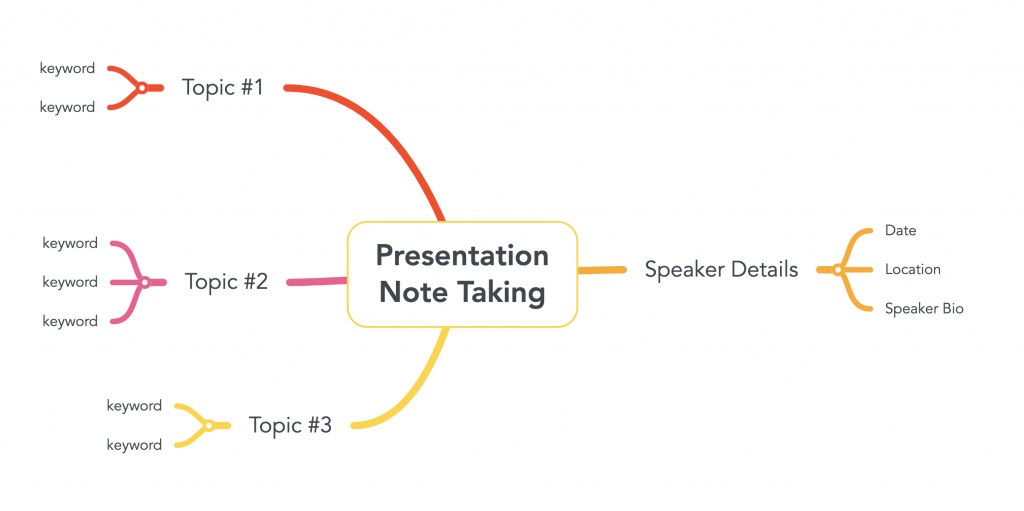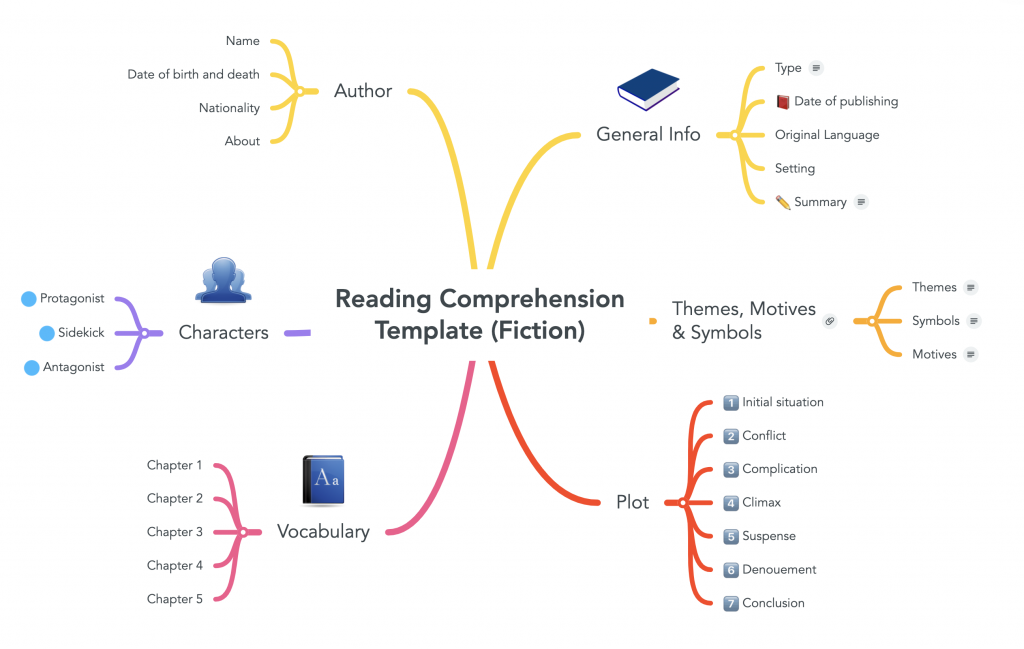Improve Note Taking with Mind Maps
Whether you are a professional or a student, taking notes is an essential part of your day to day life. With so much information to be documented and processed, note taking with mind maps is a great way to effectively write down key information in a visual way.

Learning to take notes
Chances are you were never explicitly taught how to take notes, or it was so long ago that you’ve forgotten. But effective note taking is critical in adding new information to our long-term memory as it supports understanding and processing. When note taking, whether in business or academic contexts, mind maps can provide a much needed visual aspect to this processing. Note taking with a mind map can help you to
- provide an overview of a topic,
- add new ideas quickly,
- see connections between concepts more easily, and
- create visual triggers with images, colors, and drawings.
What’s wrong with traditional note taking?
Linear notes, while still popular among schools around the world, are not nearly as effective as mind mapping. They do not provide an overview of topics as mind maps do, which often leads to rereading whole passages in search of a particular piece of information. They are repetitive and harder to memorize, physically strenuous if written by hand and encourage whole sentence writing, which wastes valuable time.
Perhaps the biggest downside of linear notes is the difficulty with which information can retroactively be added. If you take notes in a word processor on your laptop or tablet, the tendency is to write down lectures word-for-word without rephrasing, thus skipping essential processing of the information.
Why use mind maps for note taking?
Mind maps address many of the issues presented by linear notes. Because mind maps are inherently visual, you can take notes and never lose sight of the bigger picture. Notes in mind maps begin with a central idea and branches, reaching out in all directions.
By nature, these topics and subtopics show hierarchies, relationships and connections between ideas. And because a mind map can always be added to, those connections are adjusted and emphasized in real time.

Since you focus on the connections rather than taking copious notes, you end up with fewer notes but more meaningful information. Additionally, you will not transcribe lectures verbatim and, therefore, will draw your conclusions and process the information presented to you.
When mind mapping online, you can add images, notes, files and links, while color coding and designing your mind map. And while adding these elements is fun, it also creates visual triggers, which assist in memorization. Centralizing all your information from a presentation or lecture in a mind map also means that you won’t have to store different things in different places.
How to take presentation notes with mind maps
Before the lecture or presentation begins, start a new mind map with your first topic. In a note on the topic, jot down any details you might want to refer to later, such as the speaker, location, date, etc.
When the presentation begins, create a subtopic and keep creating them in clockwise order. Rather than write down what the speaker says word-for-word, focus only on keywords that you find necessary to take down. The goal here is to create a visual summary of key takeaways.

Whenever possible, do not use whole sentences, but rather short phrases. If longer explanations are necessary, add them in notes section of a topic and not as the topics themselves.
As the presentation continues and you notice relationships between ideas, indicate them by drawing arrows and lines. Use icons, colors and font sizes to emphasize, highlight, number and group ideas.
Add images to the topics, by uploading an image from your computer or by pasting one from the internet. If this is too time-consuming to do during the presentation, doing it later can also act as the first repetition for yourself in the processing of the content.
When you’re back at school or work and want to quickly share what you’ve learned with your colleagues, you can either invite them to the mind map via email or turn the map into a slideshow and present them in a face-to-face meeting.
More than presentation notes with mind maps
As more and more people watch online content, videos are becoming as important an information source as anything else. These too can be mind mapped while watching. Give it a try in the same way as you would take notes for a presentation, putting the video in the center of the mind map. Since it is embedded, it plays directly in your mind map.

If you find that your studies or work require a lot of reading and that you often find yourself searching through materials again and again for particular points, try mind mapping while reading. It will help to keep that knowledge in your long-term memory and serve as an easy reference point.
To do this effectively, highlight as you read, stopping after each chapter. When you reach the end of a chapter, add the sections you’ve highlighted to your mind map. As you start to see connections and relationships in the story and your notes, indicate them on your mind map. When you’ve finished the book, you’ll see that much more of it remains in your memory.
Give note taking with mind maps and try! Improve your understanding, processing and long-term memory while having fun designing and organizing your thoughts visually.
